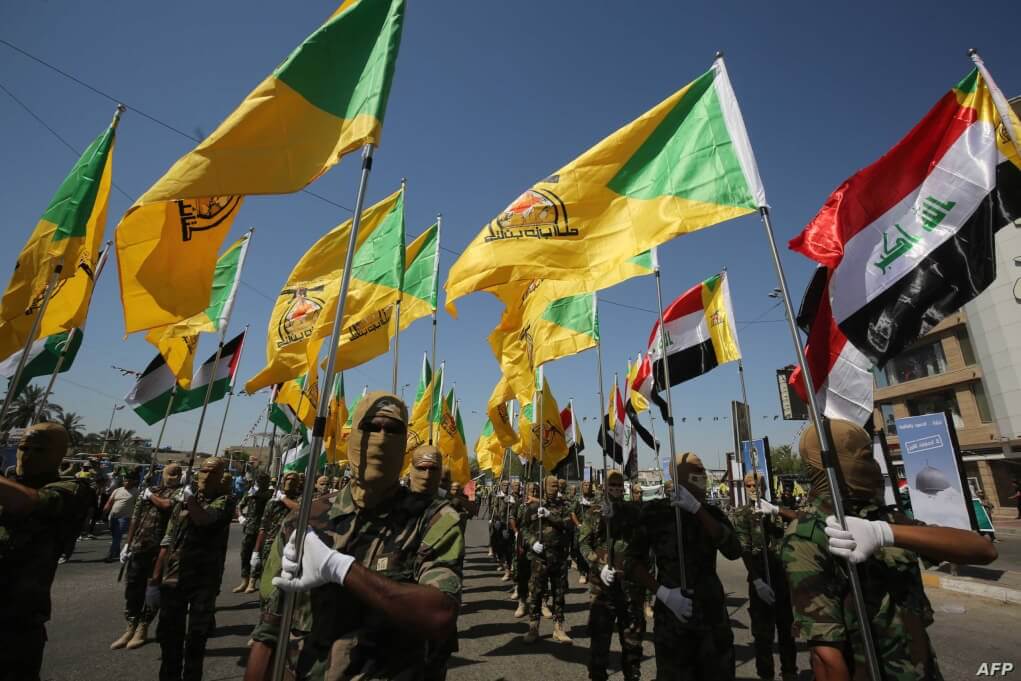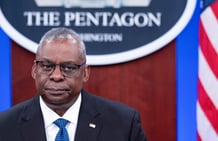The recent drone attacks on US interests in Iraq highlight Iran’s expansionist arsenal, and how its arms remain the biggest obstacle to full Iraqi sovereignty, according to a report published by the National Interest.
The American magazine says, in an article by writer specializing in security affairs, Maya Carlin, that the series of attacks that took place in Iraq last week reveals the extent of the escalating tensions between the pro-Iranian militias on the one hand, and the United States and the Iraqi security forces on the other hand.
According to the author of the article, “Iran and its proxies still constitute the biggest obstacle to Iraq on the path to obtaining sovereignty.”
She points out that with the approach of a new round of discussions on the Iranian nuclear file, the escalation in attacks targeting US interests in Iraq is expected to continue.
The author sheds light on the attack that targeted Erbil airport on the 13th of this month, and said that what happened is “an important matter because it indicates that Iran is expanding its arsenal that it wants to deploy against US interests in Iraq.”
She pointed out that “since the Iraqi Prime Minister Mustafa Al-Kazemi took over in May 2020, the United States has worked to improve relations with Baghdad, but Tehran, in response, interfered in the talks between the United States and Iraq and intensified its missile attacks against American interests.”
All this contributed, according to the author of the article, to the deterioration of the stability of Iraq, and the impact of its relations with Western countries.
Kurdish officials said that a drone dropped explosives near US forces stationed at Erbil airport in northern Iraq late on Wednesday, in the first such attack of its kind targeting US forces in Iraq.
There were no reports of casualties as a result of the attack, which comes amid a series of missile attacks that have targeted during the past months bases hosting US forces and the embassy in Baghdad, and Washington blames Iranian-backed factions for it.
A barrage of missiles struck the same US-led military base in the vicinity of Erbil International Airport in February, killing a non-American contractor working with the United States Army.
The United States sometimes responds with airstrikes on militias allied with Iran, including at the Iraq-Syria border.
In total, more than 20 attacks, with missiles or bombs, have targeted bases housing US military or US diplomatic headquarters, since US President Joe Biden’s arrival at the White House in late January, while dozens of others have taken place before that for more than a year and a half.
Only about a week ago, the US administration resumed a virtual “strategic dialogue” with the Iraqi government headed by Mustafa Al-Kazemi, who is also under threat from pro-Iranian factions.
Both the United States and Iran have a military presence in Iraq, as the United States leads the international coalition that has helped Iraq fight ISIS since 2014, and has deployed about 2,500 soldiers in the country. For its part, Iran supports the Popular Mobilization Forces, which are part of the Iraqi state institutions.
The escalation between the United States and Iran reached its peak in January 2020, when an American march targeted the commander of the Quds Force in the Iranian Revolutionary Guard, Qassem Soleimani, at Baghdad airport, which led to his death, which raised fears of a direct confrontation between the two parties.














